Sydney Opera House

The Sydney Opera House is a world-famous performing arts center that's easily the city's most iconic structure due to its unique design. It's featured in almost every film and television show depicting Sydney, so even if you've never been there, you'd recognize it. But would you recognize it in 500 years?
A 20th-century marvel, the Sydney Opera House was completed in 1973. The shells that make up the roof of the opera house are made of precast concrete panels. Given that it's a fairly sturdy building, it should hold up relatively well in time, although it will certainly not look as pristine.
Great Sphynx

The Great Sphynx of Giza is one of the most famous statues of Egypt. Built thousands of years ago, the statue has lasted this long and will easily last another 500 years. Its limestone body has held up well, although it is certainly starting to show some wear, including its missing nose.
Located on the west bank of the Nile, the statue depicts a mystical creature with the head of a man and the body of a lion. It is the oldest monumental sculpture in Egypt and was built in 2500 BCE. As a significant part of human history, it's hard to imagine life without it.
Big Ben

Big Ben is already almost 200 years old, so what's another 500? We're guessing it will still be standing in that time and with some changing scenery in the surrounding area. But are those human spaceships or alien spaceships? I guess we'll have to find out in 500 years.
Built in 1843, Big Ben was severely damaged by German bombs during WWII and required restoration to return it to its original state. Over time, Big Ben will certainly need some kind of restoration and repairs, to be sure, but it should be with us for a long time, considering how iconic it is for the city of London.
The Eiffel Tower
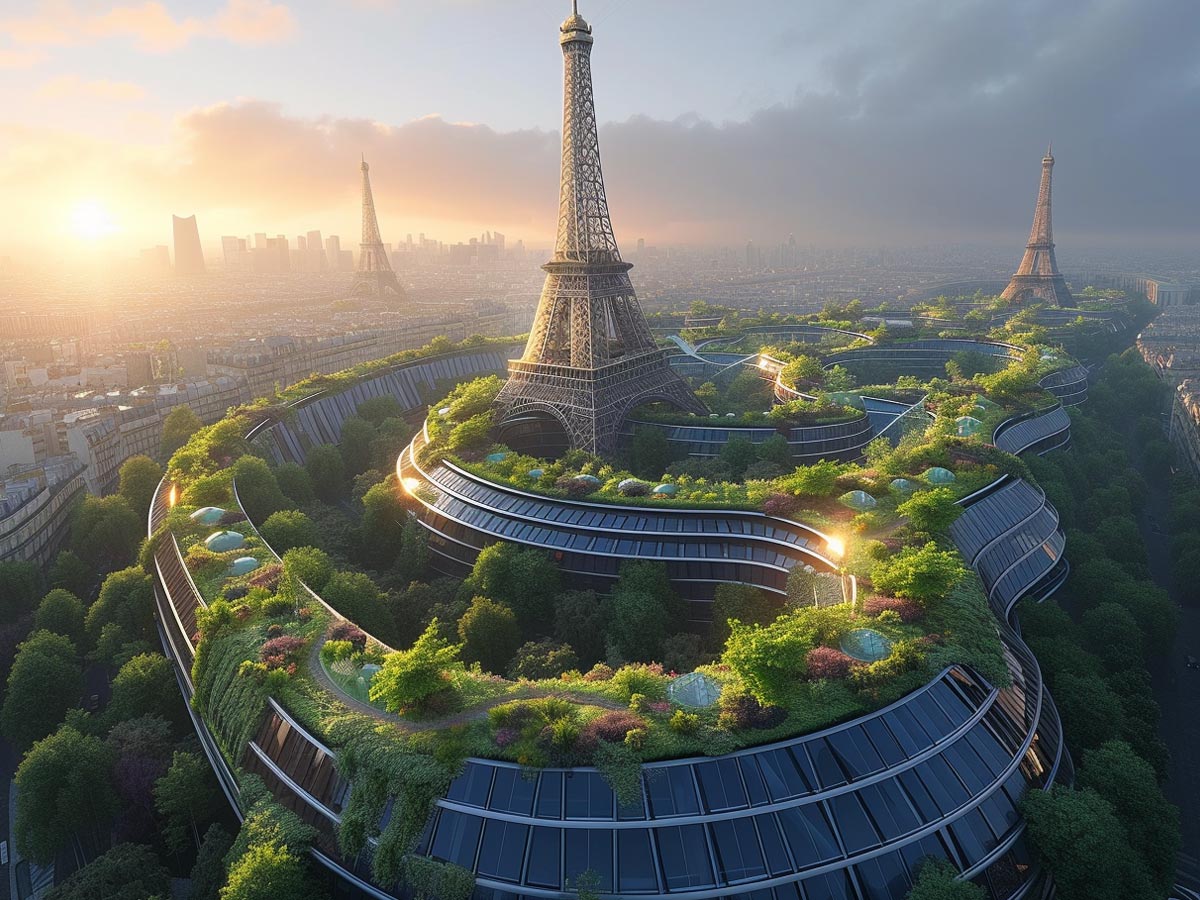
The Eiffel Tower is one of the most recognizable wrought-iron structures in the world. Named after Gustave Eiffel, whose company designed and built the tower, construction on the tower began in 1887. The tower measures 330 meters and is one of the most visited monuments in the world.
AI shows us a pretty grim future for the city of Paris, as it looks like an apocalyptic wasteland. We can also see two Eiffel towers because why not reel in twice the amount of tourist revenue? Hopefully, the future of Paris isn't that dark, but a lot can happen in 500 years, so you never really know.
The Louvre
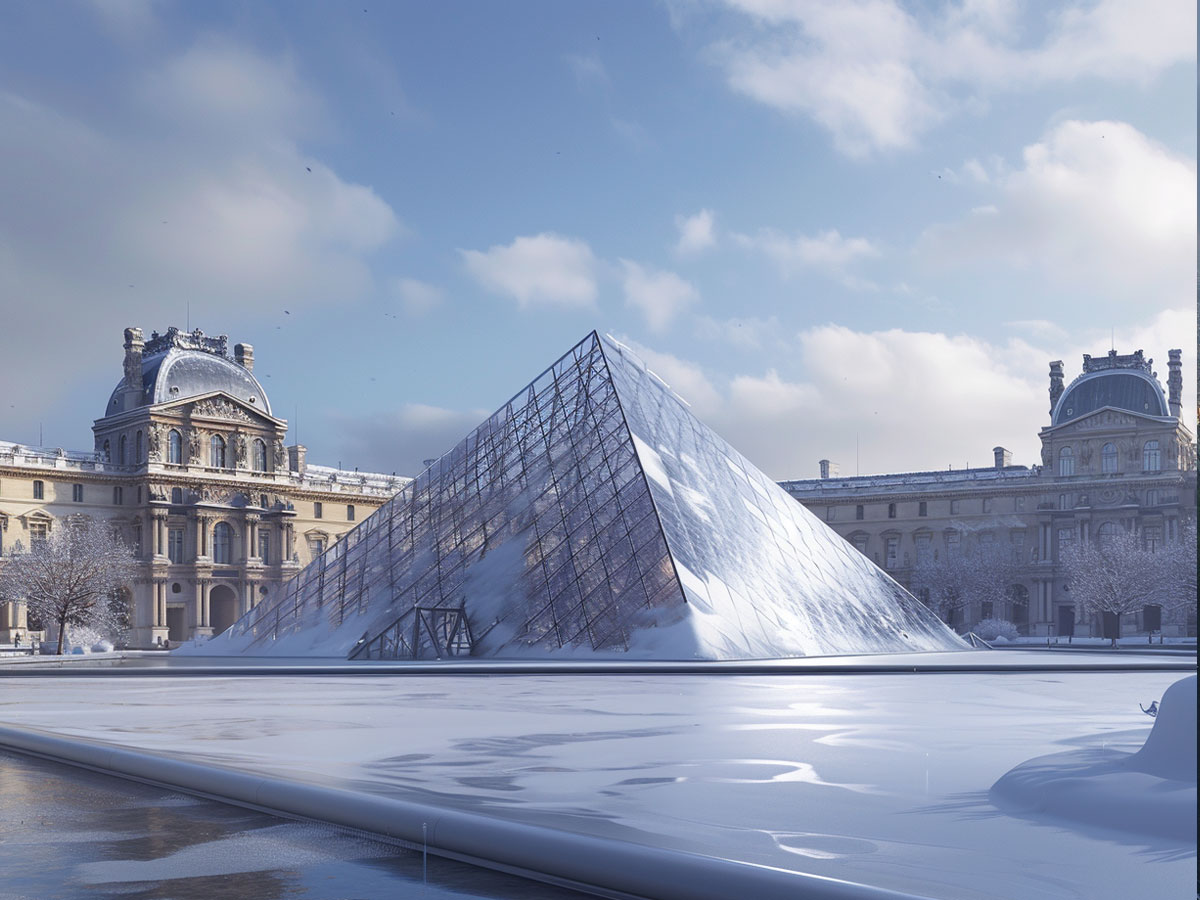
The Louvre Pyramid is unlike the stone pyramids of ancient Egypt in that it is made of glass and metal, and instead of being thousands of years old, it's only decades old. Completed in 1988, its history may not be as impressive as the pyramids of Giza, but it is certainly beautiful.
One of Paris's most recognizable landmarks, the Louvre Pyramid, was designed by Chinese-American architect I. M. Pei. The pyramid is made up of 673 panes. In 500 years, it may be standing, but the surrounding area may not be so recognizable. Here, it looks like winter hit Paris really hard.
The Great Wall of China

The Great Wall of China is easily one of the most renowned landmarks in the world. Construction on the wall began as early as the 7th century BC, but the wall would continue to be built for centuries upon centuries. The wall would serve as a point of defense as well as border control.
AI shows us a restored version of the wall in 500 years' time, which may be necessary to maintain it. We can also see it is subject to rising sea levels. But whatever happens with the wall, there's no doubt that the structure will continue to fascinate people for centuries to come.
Taj Mahal
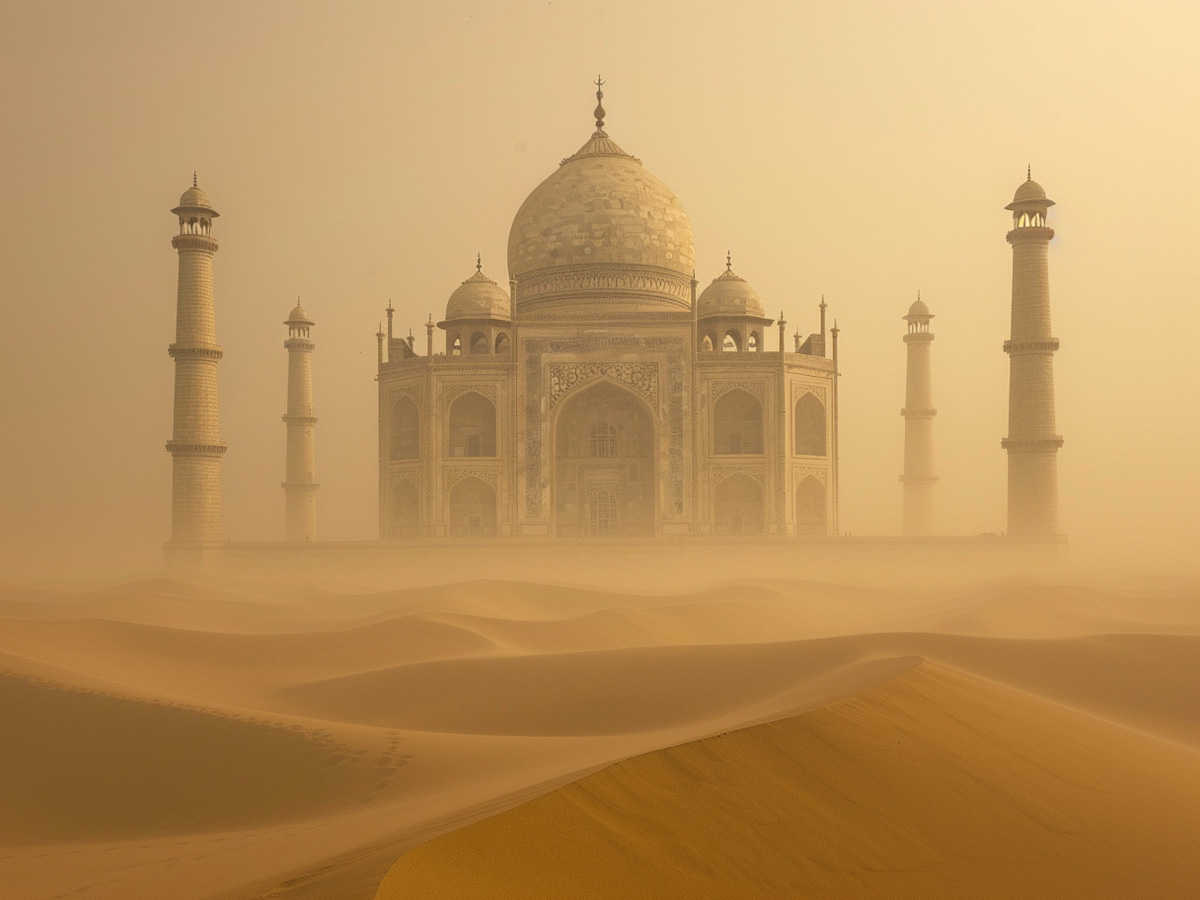
The Taj Mahal sits here in Agra, India, in a desert wasteland. Is this the future that awaits India? Only time will tell. Those dust storms can get pretty rough. But hopefully, for their sake, it is not this rough. The marble mausoleum is already about 400 years old and should well survive another 500.
Commissioned by Mughal emperor Shah Jahan, it was built as a tomb for his wife, Mumtaz Mahal, as well as his tomb. It cost around $32 million to build at the time, which is about the equivalent of $1 billion today. It is definitely the most recognizable structure in India.
Leaning Tower of Pisa

Scientists have been warning that the rising sea levels could put the Leaning Tower of Pisa right underwater. That being said, now's your best chance to see it before that happens. We imagine it will be much more difficult to take one of those cheesy tourist photos of Pisa if it's underwater.
We say difficult; however, it is not impossible. But imagine for a second, if you will, those same photos but in scuba gear. It wouldn't have quite the same effect if it looked like you were trying to hold up a tower underwater. But hey, at least it would be something new.
Old Faithful
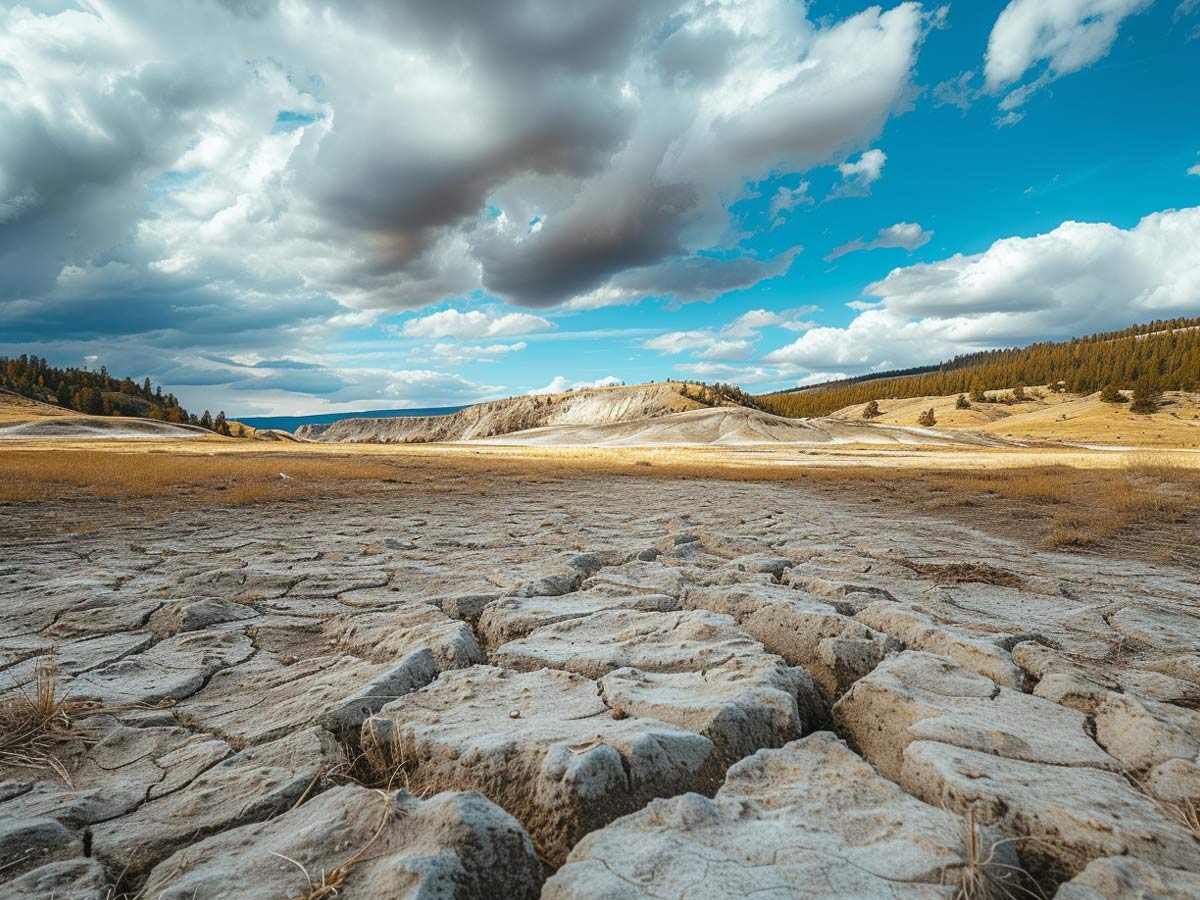
Yellowstone, the world’s first national park, is renowned for its geological features and hydronuclear activity. Located largely in the northwest corner of Wyoming, it is also part of Montana and Idaho. Among its most notable features is the Old Faithful geyser, a geothermal phenomenon. Geysers like Old Faithful rarely occur here on Earth.
What some people are not aware of when visiting Yellowstone National Park is that the park’s volcano is still active. Earthquakes occur in the area up to 3,000 times per year. An eruption could technically happen at any moment, so in 500 years, this image could very well become a reality.
Washington Monument

This looks like a scene from Independence Day, but according to AI, it may be a possibility in the future. The prospect of getting visited by aliens has fascinated people for years as it answers the age-old question about whether or not we are alone in the universe. Even the government has not ruled it out completely.
The universe, in its infiniteness, makes the possibility of extraterrestrial life probably, but for some people, the real question is whether or not we have been or ever will be visited by beings from another planet. Sure, maybe we'll never be visited by little green men, but it would be a lot cooler if they did.
Golden Gate Bridge
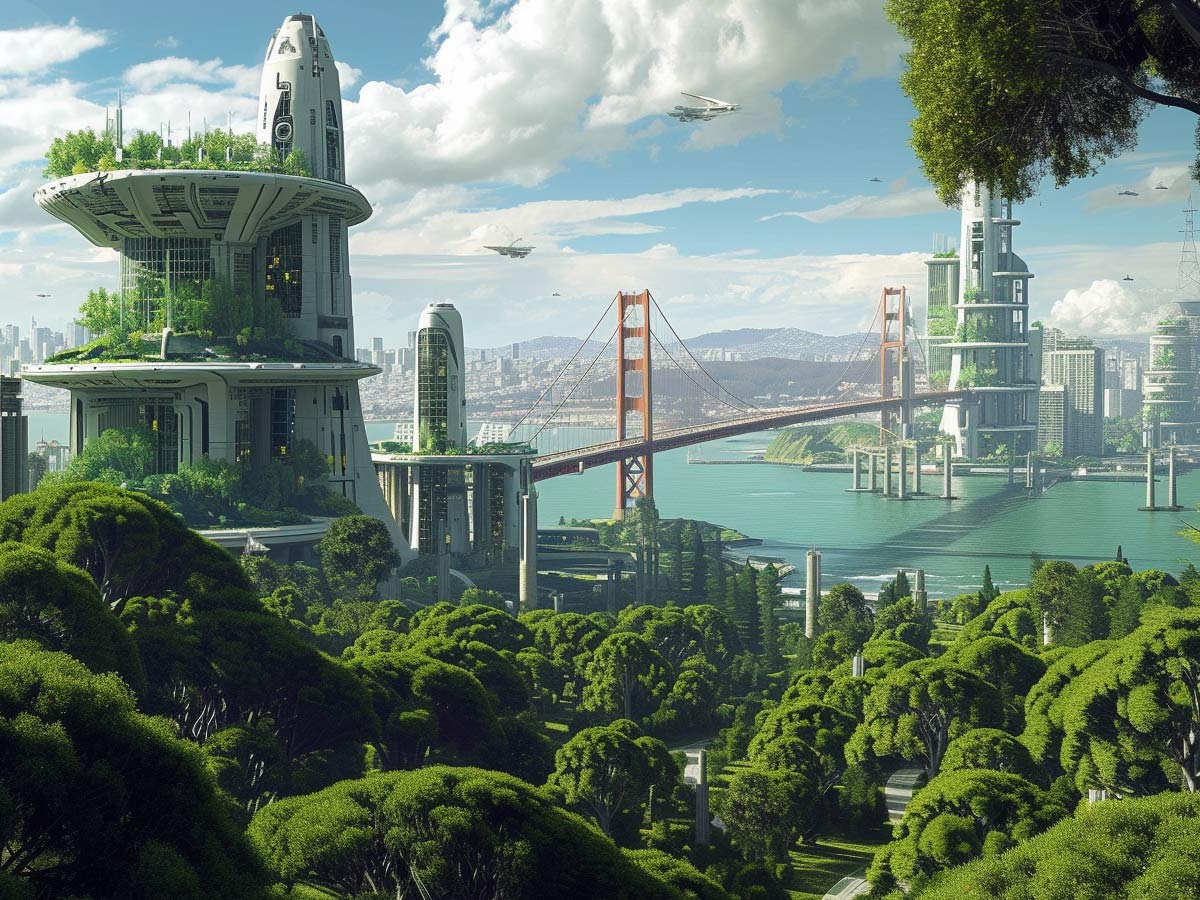
Provided California can meet its environmental goals and do its part to take care of the planet, San Francisco should remain one of the best stops in California. The area is filled to the brim with stunning vistas, gorgeous city parks, miles of hiking trails, and so much more to offer tourists and its residents.
The city also offers a lively culture with charming cafes and shops, historic neighborhoods, museums, and everything else you could want in a city. We expect that the iconic Golden Gate Bridge, which was completed in 1937, probably won't last 500 years into the future, but surely, remnants of the bridge will remain.
Lincoln Memorial
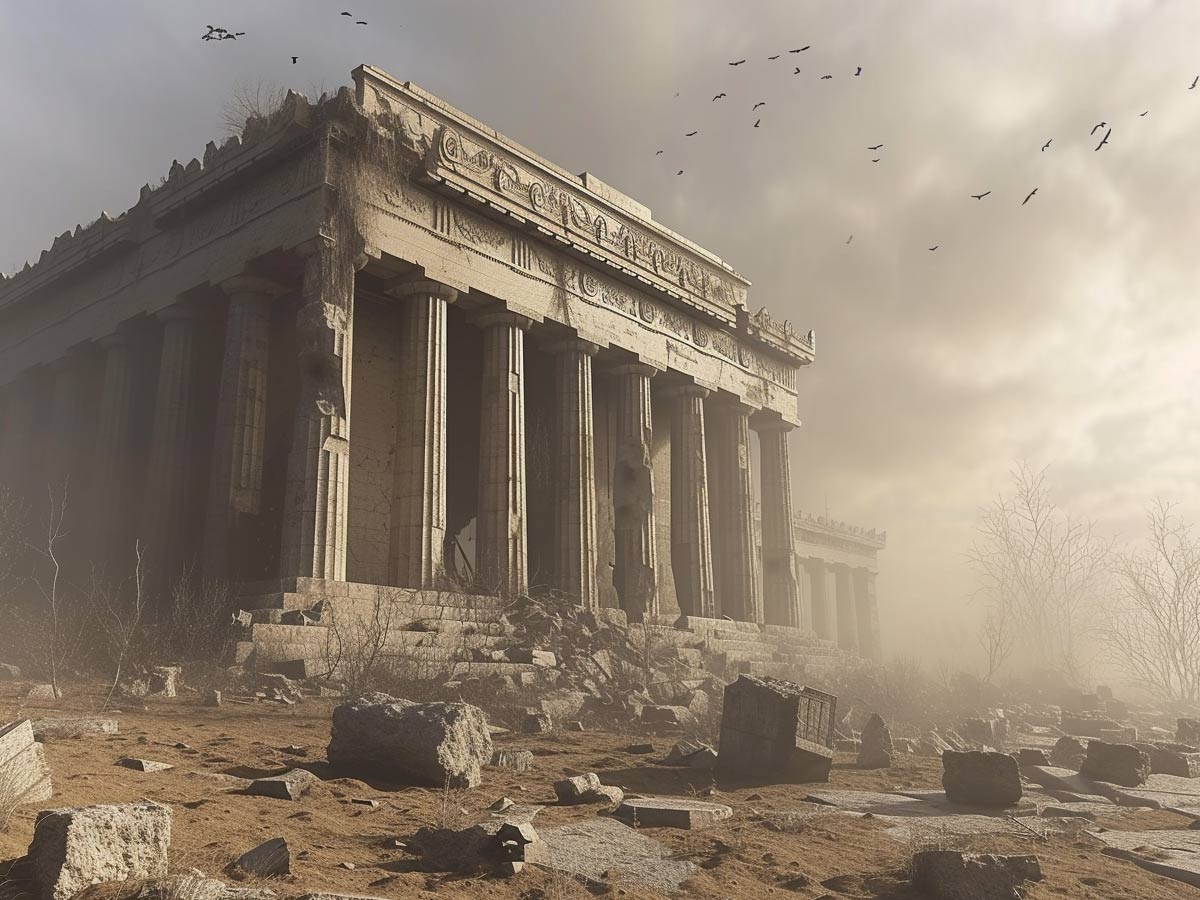
Political strife will undoubtedly be the undoing of Washington DC. It's inevitable. While America may be standing in 500 years' time, it's also likely to look different, and that includes the location of a new capital if the old one falls. Here, the AI shows us a glimpse into a possible future where Washington is in flames.
The Lincoln Memorial can be seen here in ruins with flames and surrounding smoke. Even the founding fathers had predicted that a future revolution may happen and suggested that it should, saying, "I hold it that a little rebellion, now and then, is a good thing." At the same time, that doesn't have to mean violence, so hopefully, we can all just change our attitudes instead and learn to exist peacefully together.
Mount Rushmore
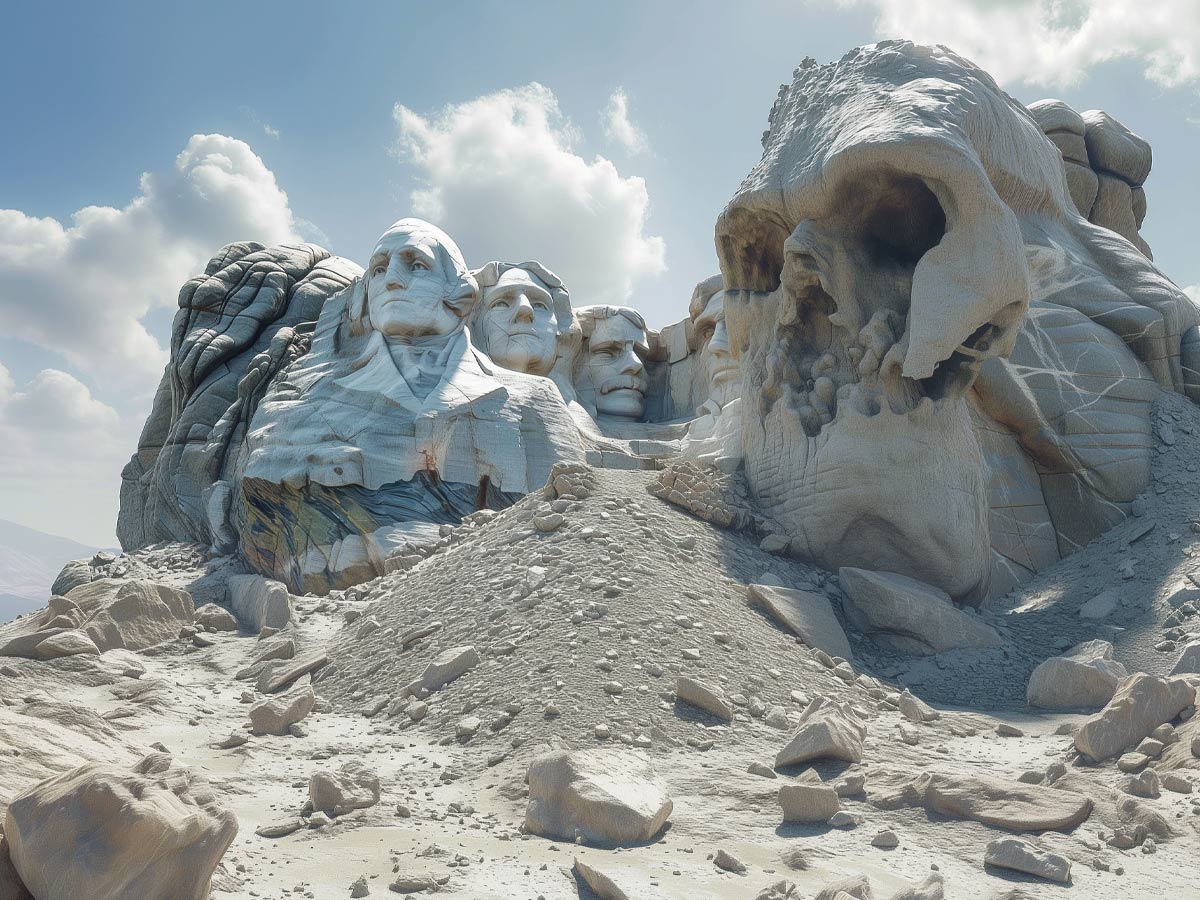
Mount Rushmore may be a giant sculpture depicting the faces of historical presidents who long passed (George Washington, Abraham Lincoln, Thomas Jefferson, and Theodore Roosevelt), but the sculpture itself isn't even 100 years old yet, so we haven't even begun to notice what has been happening to Mount Rushmore over time.
All things wither and die, and Mount Rushmore will be no exception. Without a doubt, Mount Rushmore will be subject to erosion over the course of 500 years, and it will probably look like this. As you can see, you probably won't even be able to tell what faces stood there before. Nothing lasts forever.
Grand Canyon
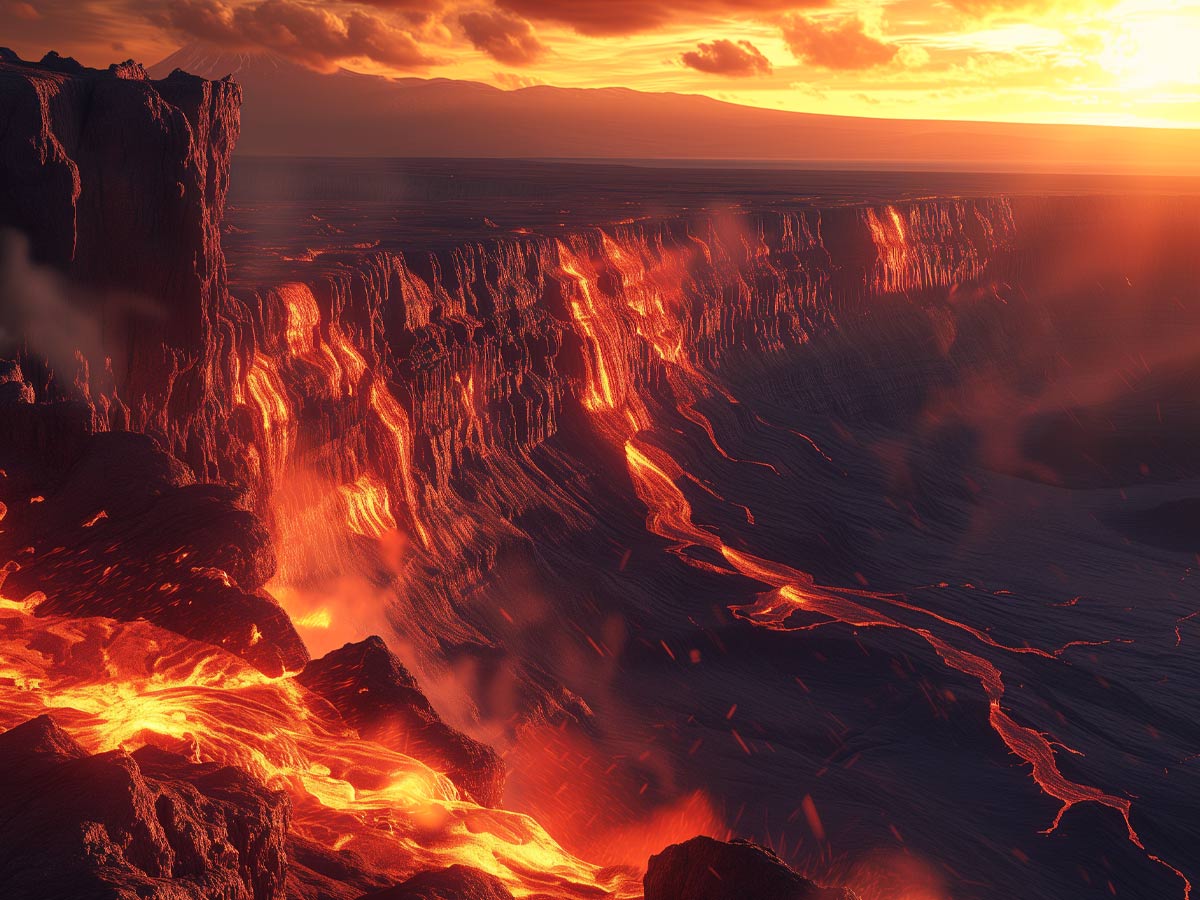
The Grand Canyon is one of America's greatest natural wonders. The steep canyon offers one of the most majestic views in the West, and it is thought to be as much as 6 million years old. It was once a place of volcanic activity, but that has subsided, so what is happening here?
Well, just because there isn't volcanic activity now doesn't mean there won't be. The Uinkaret volcanic field is made up of multiple monogenetic volcanoes. It's been thousands of years since the last eruption, but in 500 years, it's possible that another eruption could occur.
It's that, or maybe it's an air raid by aliens...who can say, really?
Disney World
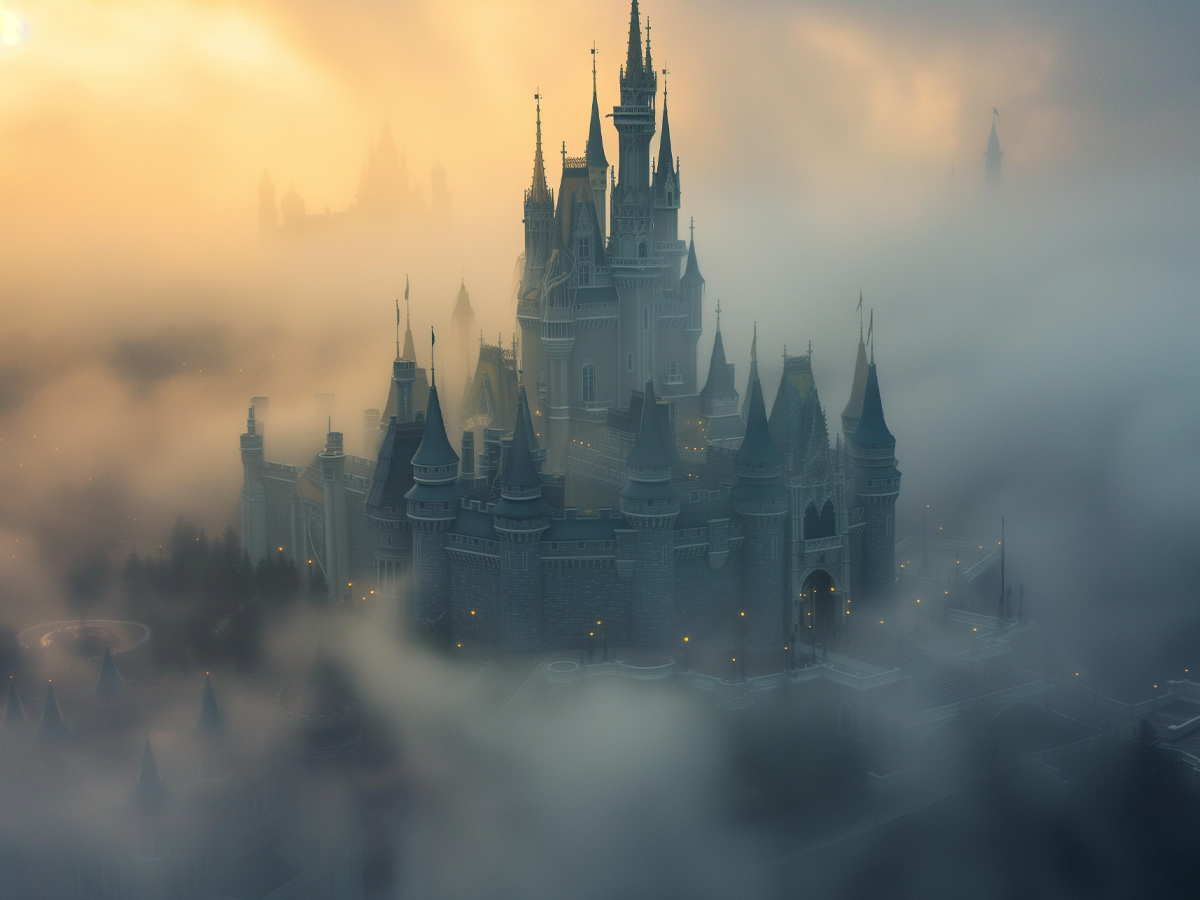
Disney World and its Magic Kingdom is referred to as "The Most Magical Place On Earth" - but in 500 years, will it be so magical? The park was founded back in 1971, making it fairly old already, and if it isn't yet showing any signs of aging, it will undoubtedly be in 500 years' time.
The rides and the structures there aren't necessarily things that have been built to last, and that's why they constantly need renovation. And even if the park is open that long, in 500 years, it won't be nearly as fascinating to kids. Consider then the growing problem of population and inflation, and Disney World probably won't even be affordable, as it already isn't.
Christ the Redeemer
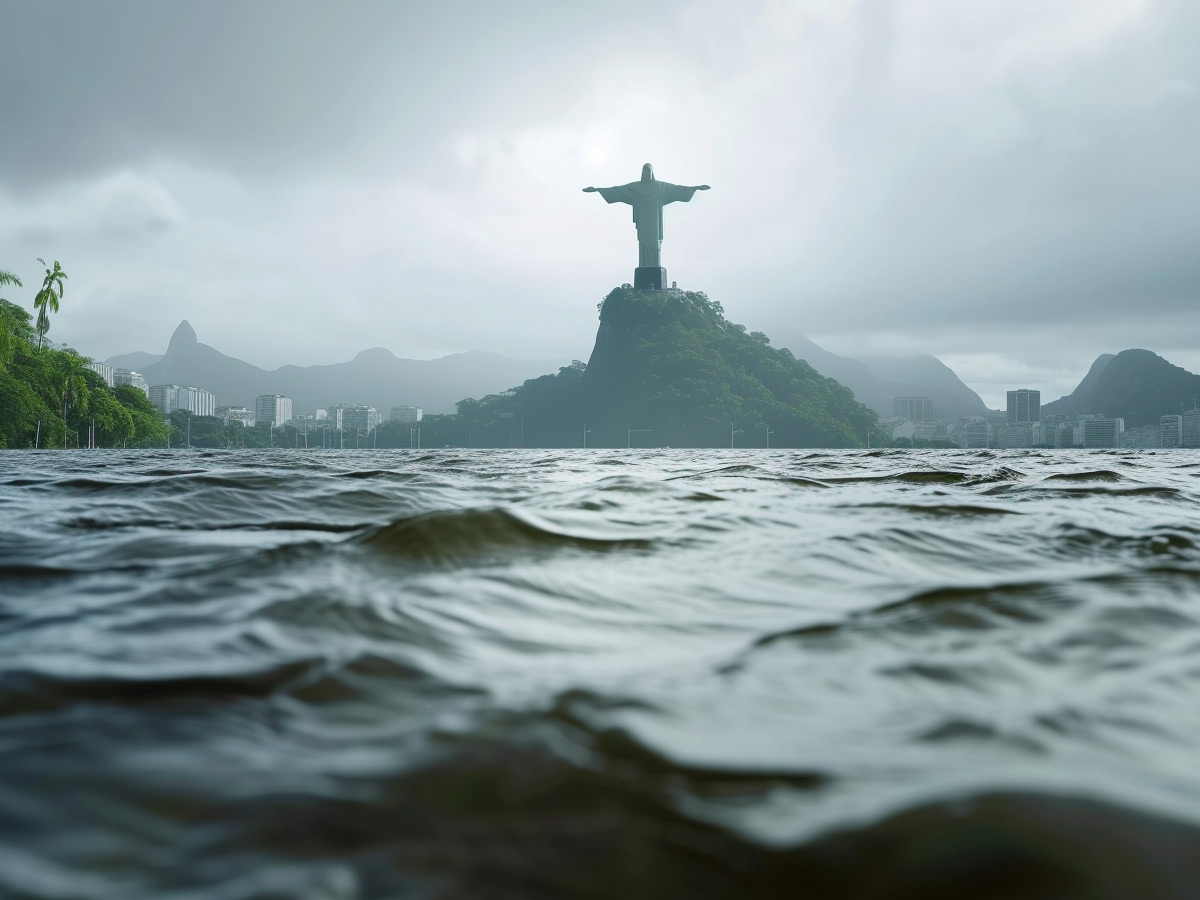
Undoubtedly, another victim of the rising sea levels in 500 years looks to be Christ himself, or rather the famous statue of Christ in Rio de Janeiro, called Christ the Redeemer. Millions of tourists and citizens alike flock to see this famous statue, which is one of the most famous landmarks in the world.
Designed by French sculptor Paul Landowski, it was constructed by two engineers, the Brazilian Heitor da Silva Costa and the French Albert Caquot. Romanian sculptor Gheorghe Leonida worked on the face. It was completed in 1931 and measured 30 meters high, which doesn’t even include the pedestal, which adds another 8 meters. That’s a heck of a lot of Jesus.
The Pyramids
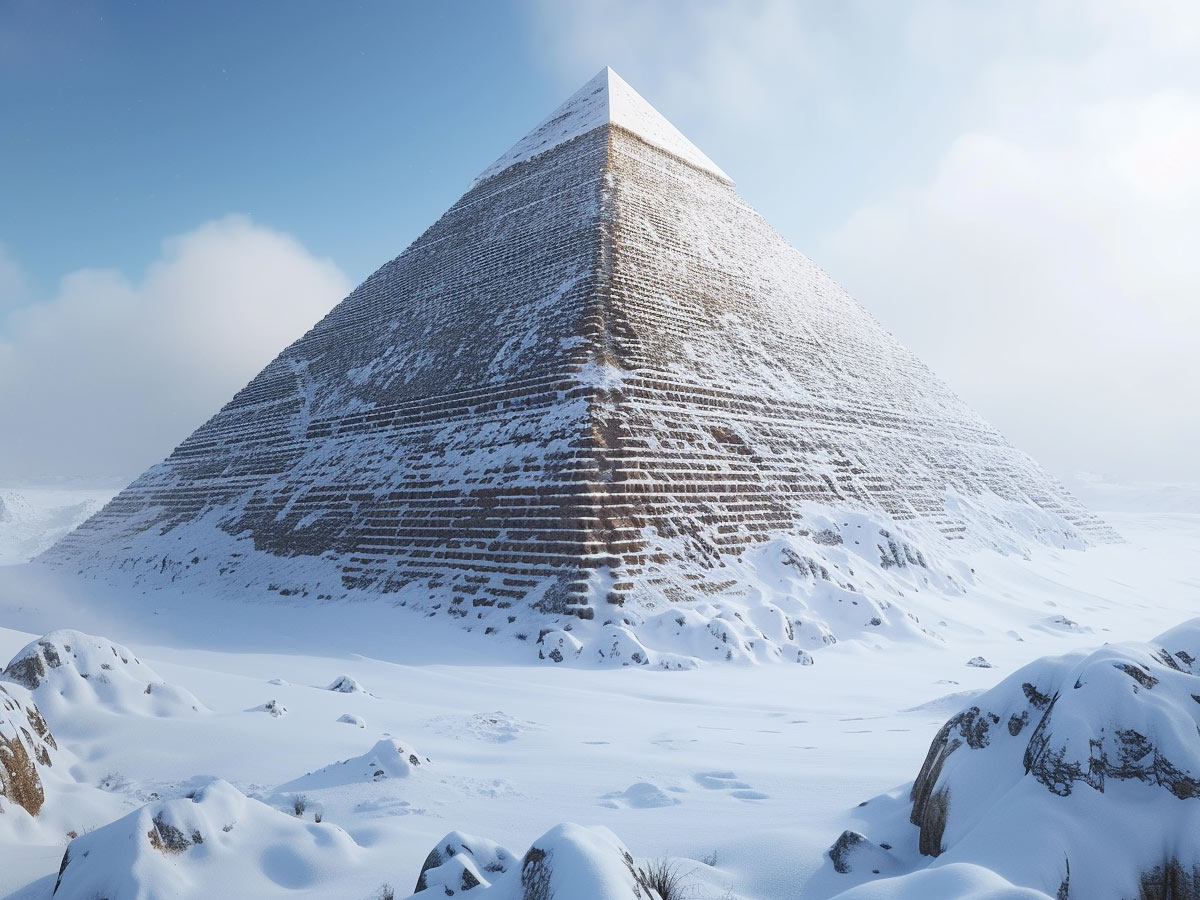
Giza in Egypt has never been known for being a place of much, or really any snow for that matter. But with the way man-made climate change is rapidly destroying our planet, all bets are off. AI shows us a future in 500 years, where the Great Pyramids of Giza are covered in snow.
The Great Pyramid of Giza is the largest in Egypt, and it’s the tomb of Pharaoh Khufu, said to have been built as early as the 26th century BC. It stands nearly 147 meters tall, and for thousands of years, it was the tallest manmade structure in the world. But now it’s just really tall.
Seattle Space Needle
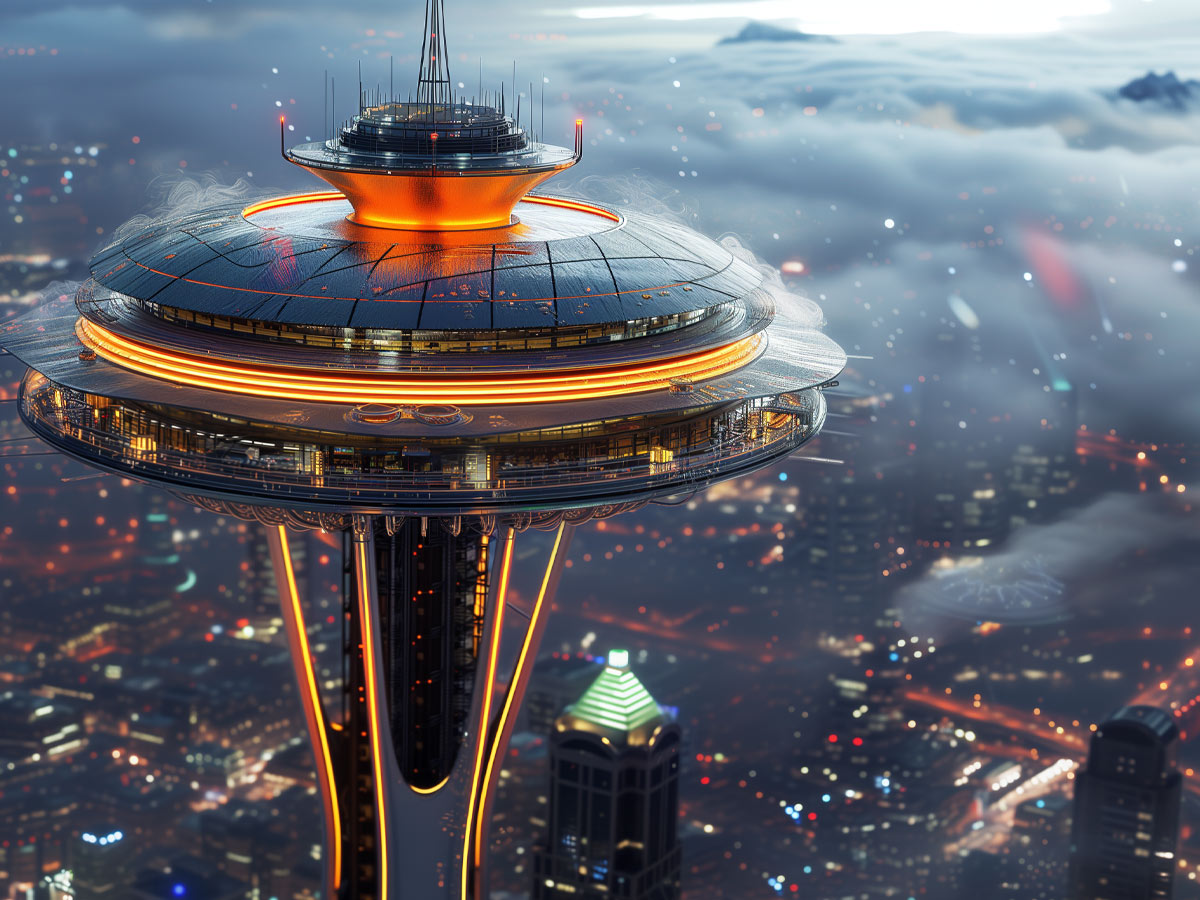
Apparently, the Space Needle of Seattle will be taking us to actual space in 500 years. Already, the city is leading us into the future as it sources clean energy. Today, the power Seattle generates is 80% clean, derived from carbon-free hydroelectricity. Seattle's renewable energy is undoubtedly a step in the right direction, as it keeps energy costs low and keeps the city breathing healthy air.
It's also a city with a ton of software engineers, so the city is helping to move technology forward as well. Perhaps Seattle is taking us to space next. You never know. This looks like some kind of portal directly into space, which seems super convenient, and I'm totally down for that.
The White House

What will the White House look like in 500 years? In keeping up with tradition, it might very well look the same even if everything around it and above it ends up changing. The White House today is over 200 years old, and it hasn't really changed much.
Whether America can even last another 500 years remains to be seen as well, but if it didn't, this is probably what it would look like in the future. What is that floating chrome ball? We have no idea, but hopefully, it won't be dangerous.
Niagara Falls
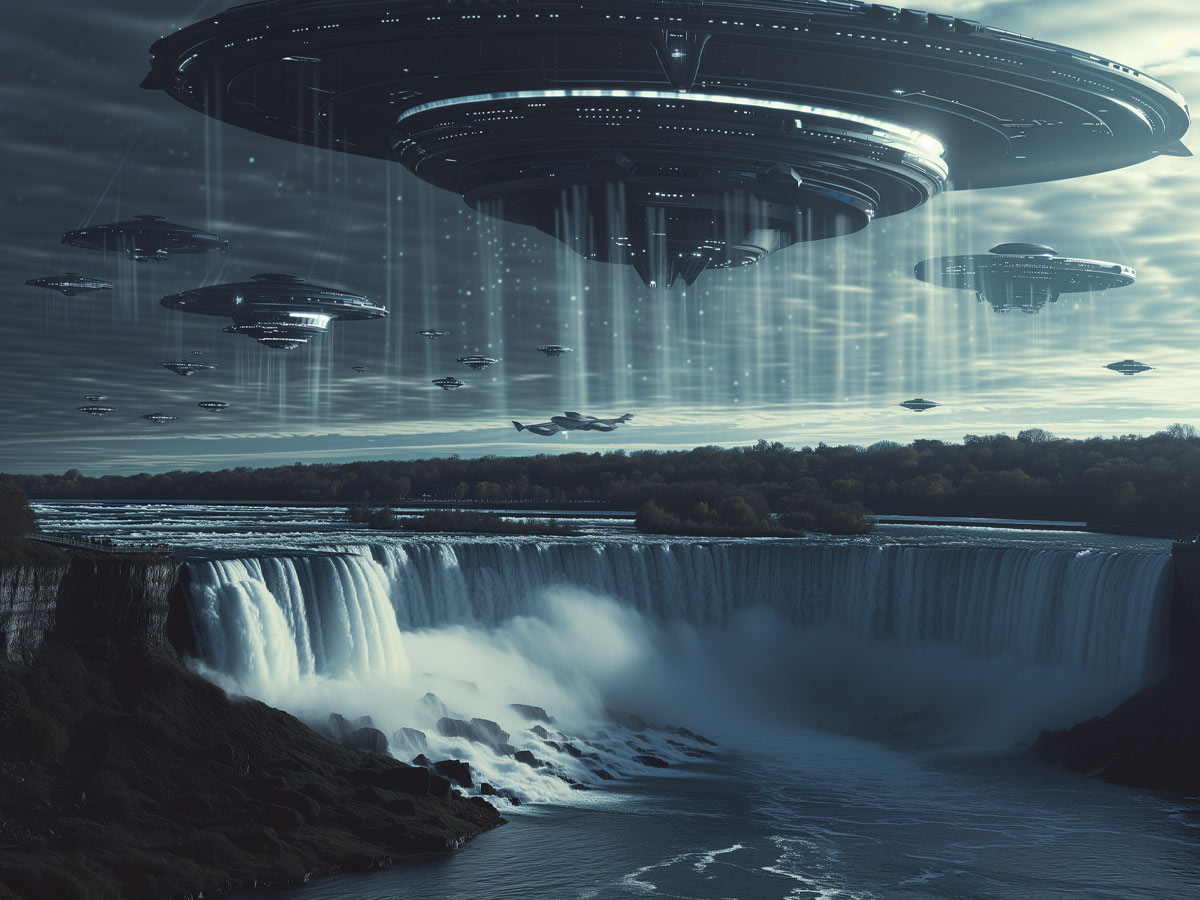
Naturally, Niagra Falls makes the perfect spaceport for aliens, so it would be no surprise to find them there in 500 years' time. Unless those are our ships. But either way, someone has to be taking advantage of those spectacular views.
We can't exactly explain why there are two moons, but that's another story. While many of the world's natural wonders may fade, surely Niagra Falls will be one that will stay with us, at least for 500 more years.
Colosseum
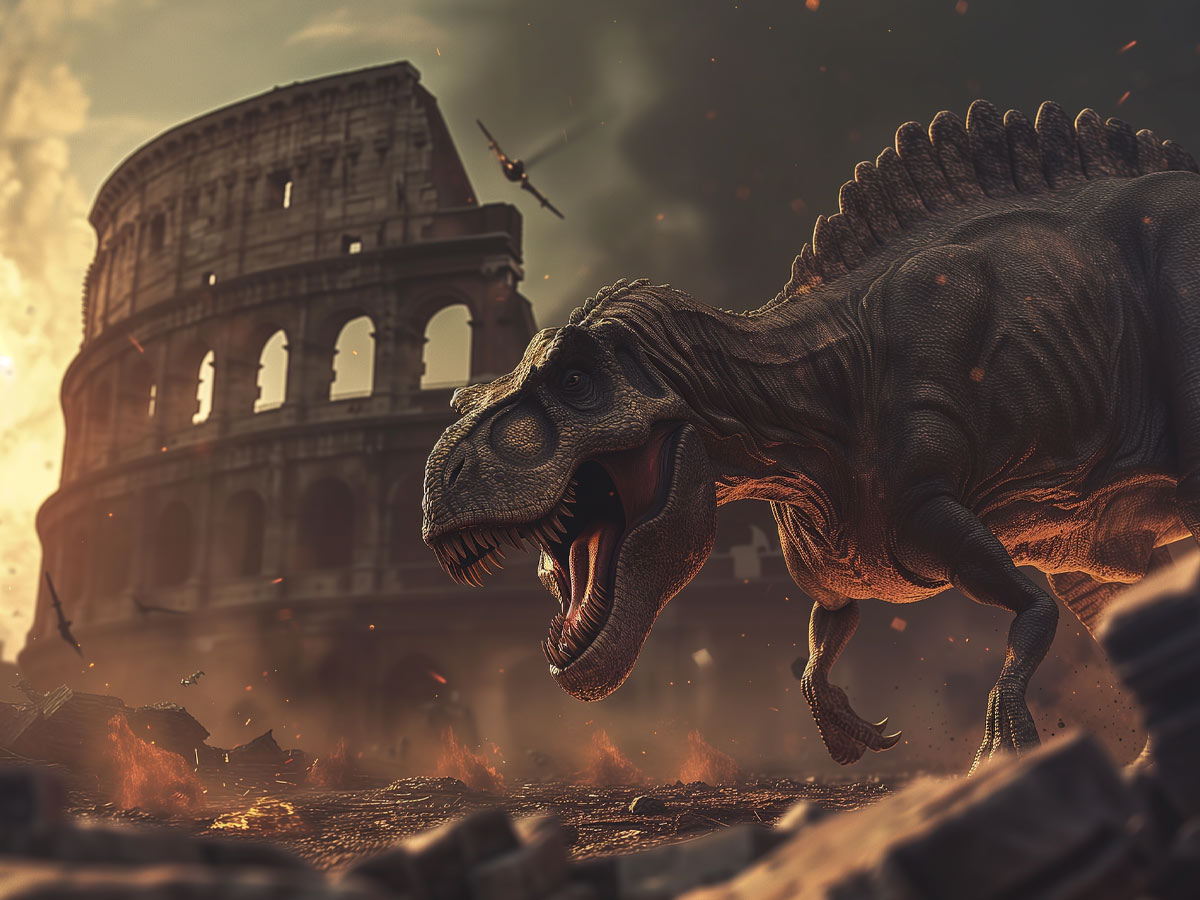
Apparently, in 500 years, we'll have learned nothing from Jurassic Park because it looks like we are bringing them back in the future. Either that, or it's an alien from outer space. Regardless, it still looks like a dinosaur, and it will be running around Rome. So, that should be a fun time.
The only thing cooler than the ancient Roman amphitheater would have to be a live dinosaur. So, if anything is going to destroy the Colosseum one day, I'd rather it be by a dinosaur than something decidedly uncool, like a billionaire who wants to build a shopping mall or something.
The Forbidden City

What exactly happened to the Forbidden City? Your guess is as good as ours, but it doesn’t look good. The city is shown here looking absolutely torn up. The city as it looks today is quite well kept, so it's hard to imagine it looking like this in 500 years, but certainly not impossible.
Perhaps it will see some kind of natural disaster or maybe even a man-made one. Hopefully, this future can be prevented. The Forbidden City was constructed in 1406 and was the former Chinese imperial palace. It also served as a residence for the Emperor of China.
The Acropolis

Here, you can see the world-famous Parthenon submerged underwater. It seems not even the ruins of ancient Greece can escape the rising sea levels. As old as the 5th century BC, it would be sad to see this become a reality, as travelers would no longer be able to enjoy the citadel.
Today, the Acropolis of Athens lies 150 meters above sea level. Having survived thousands of years, the buildings of the Acropolis are in pretty good shape, considering what they’ve been through. In 1687, the Parthenon was badly damaged during a siege by Venetians during the Morean War.
Mount Fuji
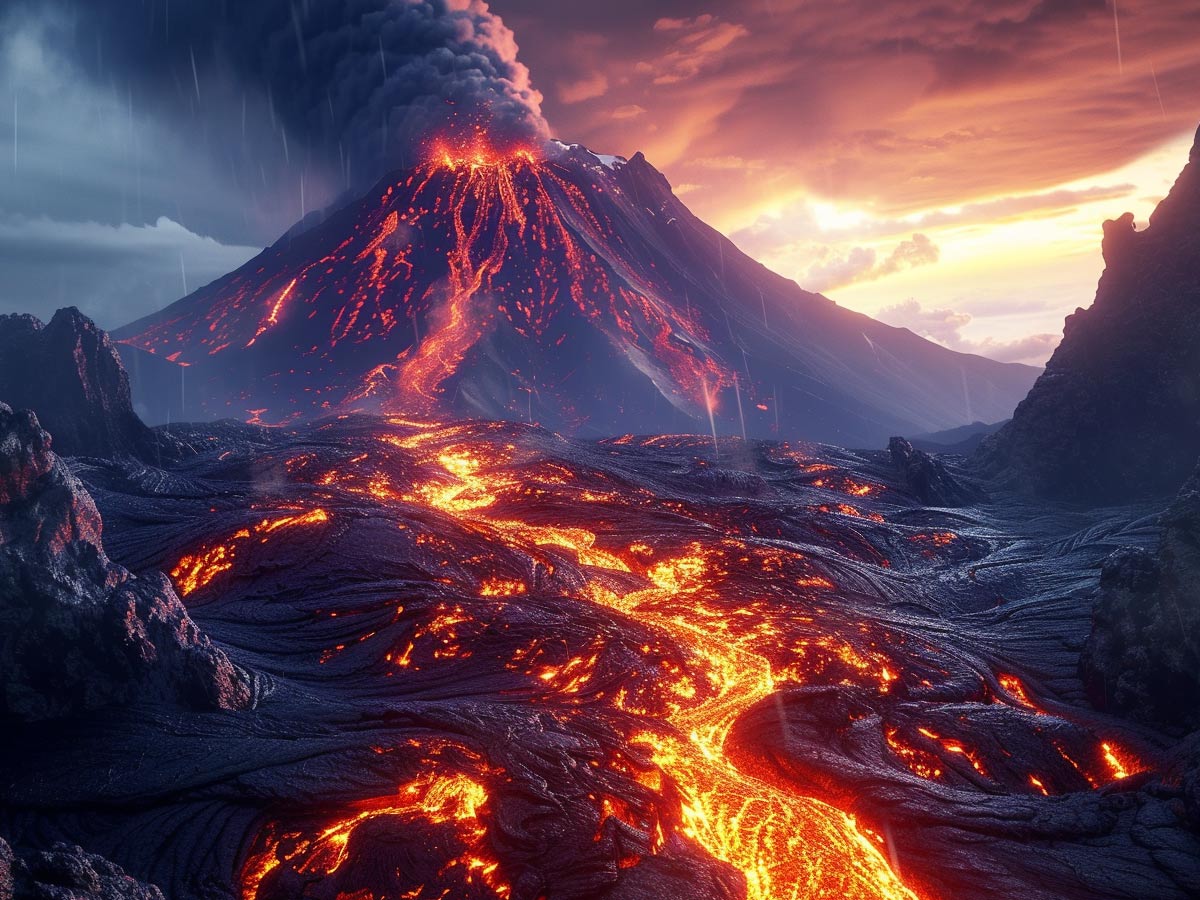
Mount Fuji, located on the Japanese Island of Honshu, is the highest mountain in Japan, but it’s not just any mountain. It’s actually an active stratovolcano that last erupted back in the 18th century. Located 100 km southwest of Tokyo, Mount Fuji is a cultural icon of Japan.
Here, AI looks at Mount Fuji 500 years into the future and sees a possible eruption. While it wouldn’t be ideal for that city below, an eruption is likely to occur in another 500 years, and the destruction could certainly look like this. When it comes to nature, beauty and danger often go hand-in-hand.
Machu Picchu
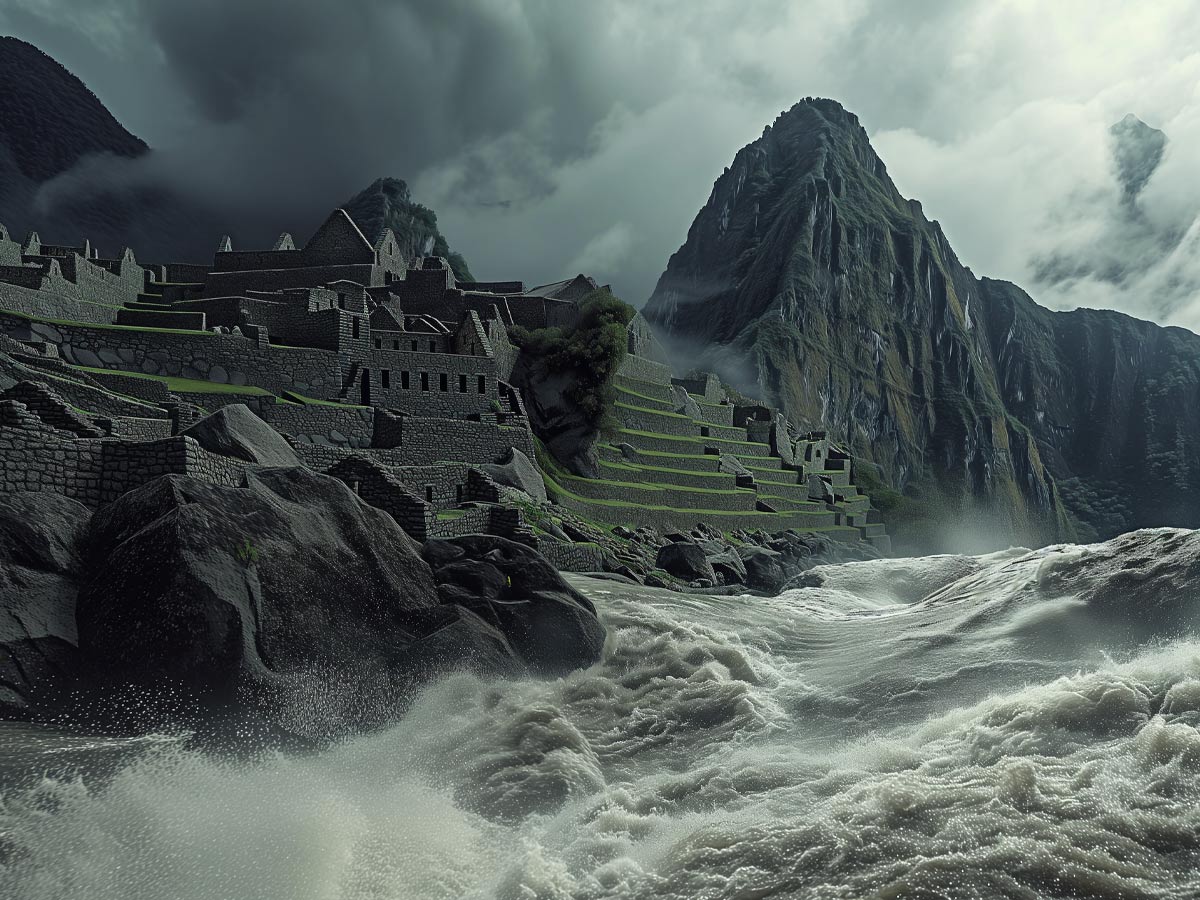
And here we have Machu Picchu about to get totally wrecked by a tidal wave. Machu Picchu has seen better days, to be sure, but its future won’t be so bright after this. Where is this water coming from, though? At Machu Picchu, natural springs located on the mountain's slope provided a water source for the citadel.
The Incan citadel of Peru was constructed back in the 15th century as an estate for the Inca emperor Pachacuti. It ended up being abandoned just a century after it was built. Today, it is enjoyed by travelers who admire the old architecture and rich history of the area.
Stonehenge
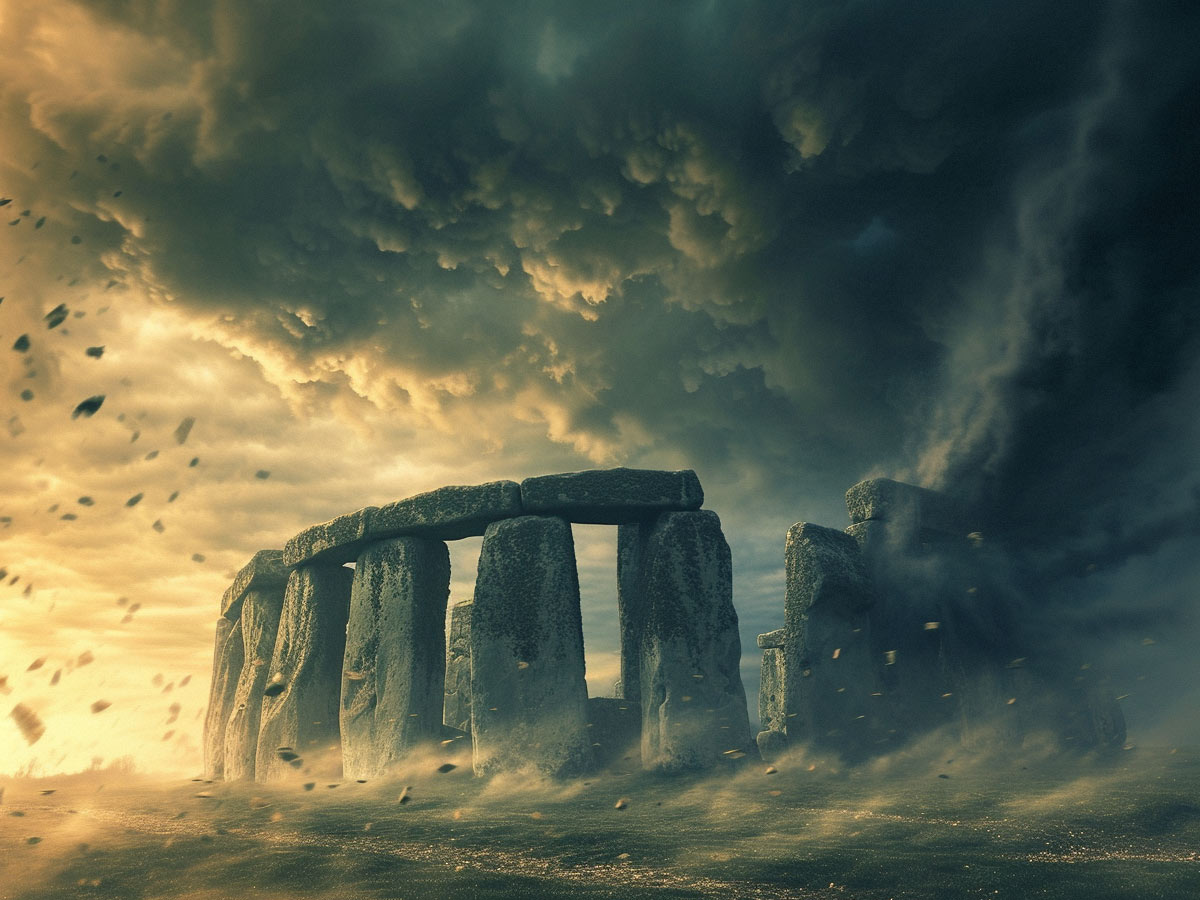
The future of Stonehenge is looking a little grim. The area has been known to get tornadoes, so this is definitely not far off. It may just be a matter of time before a tornado does Stonehenge in for good unless Stonehenge happens to be tornado-proof. Nobody even really knows what it is.
While it's certainly fascinating to see and a popular tourist spot, archaeologists aren't sure of its purpose or where it came from, though they believe it is as old as 3000 BC. But whether aliens built it or some really buff dudes, it's one of the most popular tourist destinations.
Empire State Building

New York City would have to be one of the busiest cities in the country. It is the most populous city in the country, with nearly 9 million people living in an area that is just 300.46 square miles. And with so much to see and do there, it should come as no surprise that it is the most photographed city in the world.
It would be a shame if the city suffered a zombie outbreak, but that looks like New York's future in 500 years as we see zombies headed for the Empire State Building, undoubtedly the city's most famous building. I mean, it's possible they are just picking up souvenirs, but I'm pretty sure they are looking for brains.
Paris Catacombs

What will the catacombs of Paris look like in 500 years? A lot greener, apparently. It seems that perhaps the people have left the city, and there's room for green to grow again, starting from the depths of Paris. It is a sad and beautiful sight in every way. But hey, the plants are happy!
The underground ossuaries of Paris are said to hold the remains of over six million people. They were created to reduce the overflow in the city's cemeteries. Now, this cool and creepy burial ground is one of Paris's most fascinating landmarks.
Windsor Castle
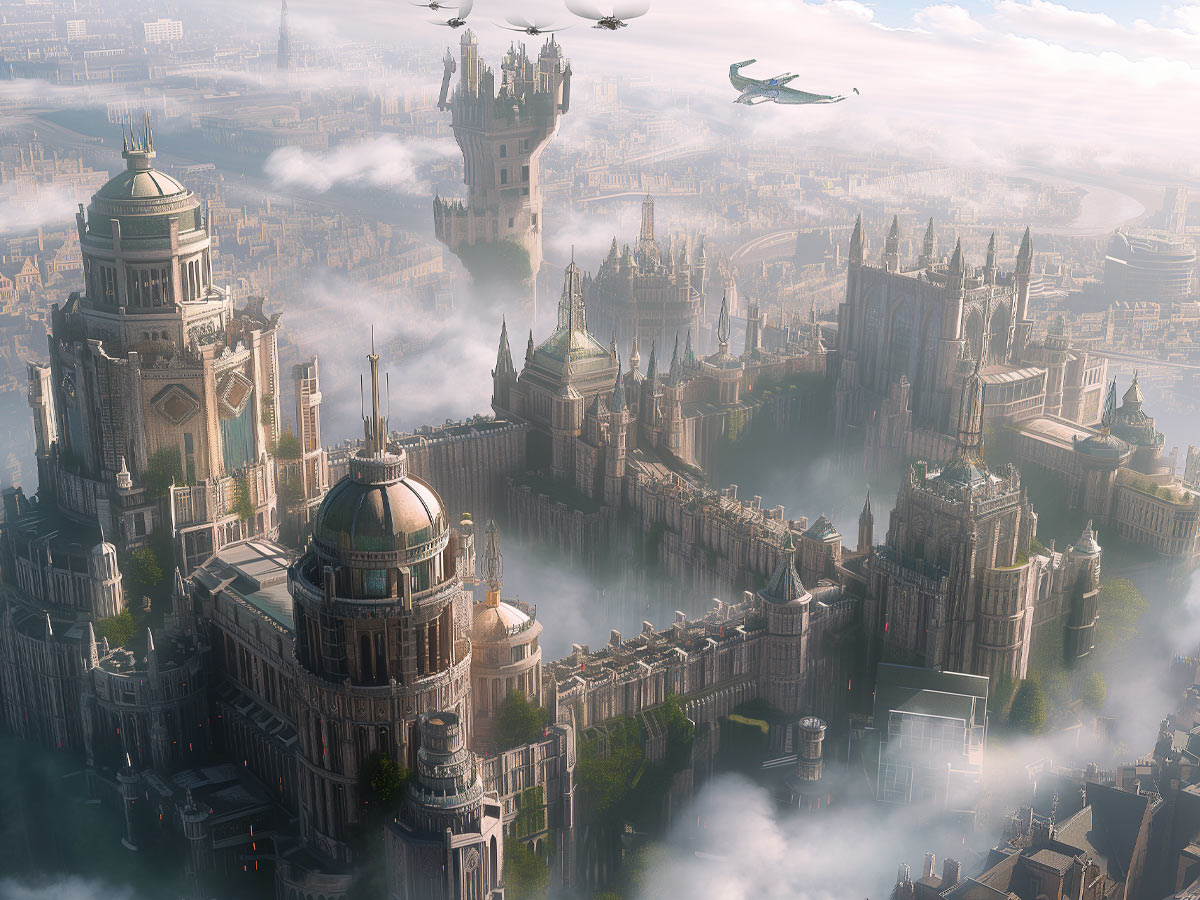
Why is Windsor Castle above the clouds? I can't really say. I know the royal family has delusions of grandeur, but this seems a bit excessive. Or maybe this is just a symbolic image conveying the death of the House of Windsor. There are multiple possibilities, really.
The actual Windsor Castle of today isn't in heaven; it's in the English county of Berkshire. It was built in the 11th century after the Norman Invasion of England. It has been used by the reigning monarch of England since Henry I, and it's an important part of England's history and culture.
Tower Bridge

Tower Bridge doesn't look to be doing well in 500 years. Surrounded by flames, London looks to be in trouble. What is the cause? A global conflict? Alien Invasion? Zombies? Guess we'll have to wait and find out. But likely, it will just be someone else's problem.
The combined bascule and suspension bridge was built in the late 19th century. It was designed by Horace Jones and engineered by John Wolfe Barry. It crosses the River Thames and is one of London's most recognizable landmarks. But hey, it looks to be okay so far in this image, even if everything else is burning to the ground.
Just keeping the glass half full.
 Author
James Stephens
Last Updated: November 29, 2025
Author
James Stephens
Last Updated: November 29, 2025